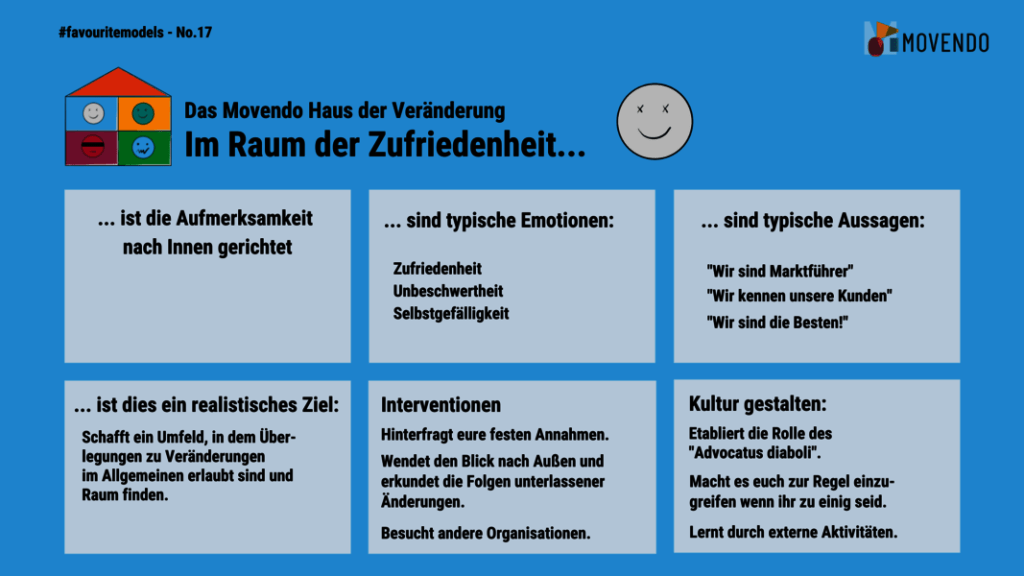Created by Juliane Wiktorin
#favouritemodel No. 17 – The house of change – Satisfaction

People who spend time here are carefree, almost complacent and feel completely content. The focus of their attention is more on the “inside” than the “outside”. For example, information about competitors is ignored, bureaucratic behavior can be observed and there is no sense of urgency to consider any changes. Typical statements include: “We are the market leader”, “We know our customers better than they know themselves”, “We are the best”, “Never change a running system”.
If a change or transformation process is then initiated, our emotional journey through the “house of change” begins: from the moment the announcement is made, we move counter-clockwise through the four rooms. Starting with the room of contentment, each additional room also represents an emotional state.
Important: Whether self-initiated or externally determined, each of us goes through the four rooms of the “House of Change” in the same order. However, the speed at which we go through the individual phases varies from person to person.
How does this #favoritemodel help you?
Leading people through change means first of all having an idea of the inner processes that people go through when they change, especially if they did not initiate the change themselves and the change means that they have to say goodbye to something that was previously important to them. Change does not always mean a major transformation. The integration of a new team member or the introduction of a new business process are changes that also require your attention. The “House of Change” can support you as a basis for reflection and discussion. It helps you to assess where the members of your team are emotionally and mentally in the change process and what support they need. You can also locate yourself, as you naturally move through the four rooms.
A realistic goal to prepare your employees for future change processes, especially in the area of satisfaction, is to create an environment in which thoughts about change opportunities are generally allowed and given space.
Use the space of contentment, for example, to:
- consciously observe the outside world by visiting other companies and comparing their best practices with yours.
- regularly examine customer satisfaction.
- Question routines from time to time and especially give “dissenting” thinkers the opportunity to share their opinions and ideas.
Everyone in your teams should be aware of the consequences of “doing nothing” in the room of satisfaction.
Author

Juliane Wilktorin
Consultant





